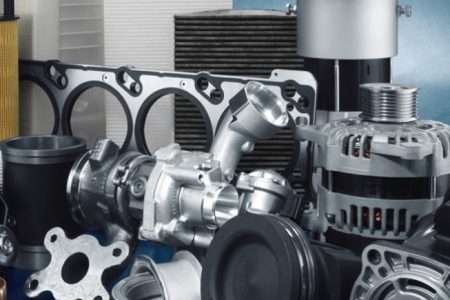A new production process from MAHLE with maximum design freedom for the piston gallery permits the way for the use of steel pistons in powerful passenger car diesel engines. The special laser welding process that is used allows for a kidney-shaped cross section of the piston gallery.
MAHLE is thus solving a problem existing since the invention of the cooled piston itself. Thick walls have poor heat dissipation and produce high temperatures at the bowl rim. On the other hand thin walls can lead to undesired high temperatures at the inner wall of the piston gallery, causing a layer of oil carbon to form. This acts as a thermal insulator and promotes due to excessive operating temperatures undesired wear and damage to the piston and cylinder liner. The solution: a piston gallery with a kidney-shaped cross section that guides the cooling oil flow in an optimal hydraulic path and ensures uniform heat dissipation that makes overheating impossible.
Such a design is only feasible, however, using the laser welding process developed by MAHLE. It is typical to use friction welding to produce pistons, but the material buildup in the cooling channel hinders the controlled guidance of the cooling oil flow.
The use of steel pistons in passenger car diesel engines saves fuel and thus significantly reduces CO2 emissions. The reason is the lower expansion of steel relative to an aluminum piston, which has a positive effect on frictional losses. Steel pistons can also have a shorter top land and allow for a longer connecting rod with their low overall height. The smaller pivoting angle of the longer connecting rod results in smaller lateral forces and lower friction in the region of the piston skirt.
MAHLE GmbH – Corporate Communications

